Combined Stereoscopic Particle Image Velocimetry Measurements in a Single Plane for an Impinging Jet around a Thin Control Rod
Abstract
:1. Introduction
2. Materials and Methods
3. Results and Discussion
4. Conclusions
Author Contributions
Funding
Acknowledgments
Conflicts of Interest
References
- Valentich, G.M. Flow Field and Acoustic Characterization of Non-Axisymmetric Jets. Ph.D. Thesis, Florida State University, Tallahassee, FL, USA, 2016. [Google Scholar]
- Hamdi, J.; Assoum, H.H.; Alkheir, M.; Abed-Meraïm, K.; Cauet, S.; Sakout, A. Analysis of the 3D flow of an impinging jet on a slotted plate using TR-Tomo PIV and Proper Orthogonal Decomposition. Energy Rep. 2020, 6, 158–163. [Google Scholar] [CrossRef]
- Mrach, T.; Alkheir, M.; El Hassan, M.; Assoum, H.H.; Etien, E.; Abed-Meraim, K. Experimental study of the thermal effect on the acoustic field generated by a jet impinging on a slotted heated plate. Energy Rep. 2020, 6, 497–501. [Google Scholar] [CrossRef]
- Hamdi, J.; Assoum, H.; Abed-Meraïm, K.; Sakout, A. Analysis of the effect of the 3C kinematic field of a confined impinging jet on a slotted plate by stereoscopic PIV. Eur. J. Mech.-BFluids 2019, 76, 243–258. [Google Scholar] [CrossRef]
- Hamdi, J.; Assoum, H.; Abed-Meraïm, K.; Sakout, A. Volume reconstruction of an impinging jet obtained from stereoscopic-PIV data using POD. Eur. J. Mech.-BFluids 2018, 67, 433–445. [Google Scholar] [CrossRef]
- El Hassan, M.; Bukharin, N.; Al-Kouz, W.; Zhang, J.-W.; Li, W.-F. A Review on the Erosion Mechanism in Cavitating Jets and Their Industrial Applications. Appl. Sci. 2021, 11, 3166. [Google Scholar] [CrossRef]
- Bukharin, N.; El Hassan, M.; Omelyanyuk, M.; Nobes, D. Applications of cavitating jets to radioactive scale cleaning in pipes. Energy Rep. 2020, 6, 1237–1243. [Google Scholar] [CrossRef]
- El Hassan, M.; Assoum, H.H.; Martinuzzi, R.; Sobolik, V.; Abed-Meraim, K.; Sakout, A. Experimental investigation of the wall shear stress in a circular impinging jet. Phys. Fluids 2013, 25, 077101. [Google Scholar] [CrossRef]
- El Hassan, M.; Meslem, A. Time-resolved stereoscopic particle image velocimetry investigation of the entrainment in the near field of circular and daisy-shaped orifice jets. Phys. Fluids 2010, 22, 035107. [Google Scholar] [CrossRef]
- Namer, I.; Ötügen, M.V. Velocity measurements in a plane turbulent air jet at moderate Reynolds numbers. Exp. Fluids 1988, 6, 387–399. [Google Scholar] [CrossRef]
- Adrian, R.J. Twenty years of particle image velocimetry. Exp. Fluids 2005, 39, 159–169. [Google Scholar] [CrossRef]
- Willert, C.E.; Gharib, M. Digital particle image velocimetry. Exp. Fluids 1991, 10, 181–193. [Google Scholar] [CrossRef]
- McKenna, S.P.; McGillis, W.R. Performance of digital image velocimetry processing techniques. Exp. Fluids 2002, 32, 106–115. [Google Scholar] [CrossRef]
- Rockwell, D.; Magness, C.; Towfighi, J.; Akin, O.; Corcoran, T. High image-density particle image velocimetry using laser scanning techniques. Exp. Fluids 1993, 14, 181–192. [Google Scholar] [CrossRef]
- Zhang, Y. Experimental studies of the turbulence structures of impinging reacting jets using time-resolved particle image velocimetry visualisation, hot wire anemometry and acoustic signal processing. Exp. Fluids 2000, 29, S282–S290. [Google Scholar] [CrossRef]
- Assoum, H.H.; Hamdi, J.; Abed-Meraïm, K.; El Hassan, M.; Hammoud, A.; Sakout, A. Experimental investigation the turbulent kinetic energy and the acoustic field in a rectangular jet impinging a slotted plate. Energy Procedia 2017, 139, 398–403. [Google Scholar] [CrossRef]
- Assoum, H.H.; Hamdi, J.; Abed-Meraïm, K.; El Hassan, M.; Ali, M.; Sakout, A. Correlation between the acoustic field and the transverse velocity in a plane impinging jet in the presence of self-sustaining tones. Energy Procedia 2017, 139, 391–397. [Google Scholar] [CrossRef]
- Prasad, A.K. Stereoscopic particle image velocimetry. Exp. Fluids 2000, 29, 103–116. [Google Scholar] [CrossRef]
- Shi, S.; Ding, J.; Atkinson, C.; Soria, J.; New, T.H. A detailed comparison of single-camera light-field PIV and tomographic PIV. Exp. Fluids 2018, 59, 46. [Google Scholar] [CrossRef]
- Assoum, H.H.; El Hassan, M.; Hamdi, J.; Alkheir, M.; Meraim, K.A.; Sakout, A. Turbulent Kinetic Energy and self-sustaining tones in an impinging jet using High Speed 3D Tomographic-PIV. Energy Rep. 2020, 6, 802–806. [Google Scholar] [CrossRef]
- Mullin, J.A.; Dahm, W.J.A. Dual-plane stereo particle image velocimetry (DSPIV) for measuring velocity gradient fields at intermediate and small scales of turbulent flows. Exp. Fluids 2005, 38, 185–196. [Google Scholar] [CrossRef] [Green Version]
- Assoum, H.H.; Hamdi, J.; El Hassan, M.; Abed-Meraim, K.; El Kheir, M.; Mrach, T.; El Asmar, S.; Sakout, A. Turbulent kinetic energy and self-sustaining tones: Experimental study of a rectangular impinging jet using high Speed 3D tomographic Particle Image Velocimetry. J. Mech. Eng. Sci. 2020, 14, 6322–6333. [Google Scholar] [CrossRef] [Green Version]
- Assoum, H.H.; Hamdi, J.; El Hassan, M.; Mrach, T.; Abed Meraim, K.; Sakout, A. Energy transfers between aerodynamic and acoustic fields in a rectangular impinging jet. Energy Rep. 2020, 6, 812–816. [Google Scholar] [CrossRef]
- Assoum, H.; Hamdi, J.; Abed-Meraïm, K.; Al Kheir, M.; Mrach, T.; El Soufi, L.; Sakout, A. Spatio-Temporal Changes in the Turbulent Kinetic Energy of a Rectangular Jet Impinging on a Slotted Plate Analyzed with High Speed 3D Tomographic-Particle Image Velocimetry. Int. J. Heat Technol. 2019, 37, 1071–1079. [Google Scholar] [CrossRef] [Green Version]
- Assoum, H.H.; El Hassan, M.; Abed-Meraim, K.; Sakout, A. The vortex dynamics and the self sustained tones in a plane jet impinging on a slotted plate. Eur. J. Mech.-BFluids 2014, 48, 231–235. [Google Scholar] [CrossRef]
- Assoum, H.H.; Hassan, M.E.; Abed-Meraïm, K.; Martinuzzi, R.; Sakout, A. Experimental analysis of the aero-acoustic coupling in a plane impinging jet on a slotted plate. Fluid Dyn. Res. 2013, 45, 045503. [Google Scholar] [CrossRef]
- Alkheir, M.; Mrach, T.; Hamdi, J.; Abed-Meraim, K.; Rambault, L.; El Hassan, M. Effect of passive control cylinder on the acoustic generation of a rectangular impinging jet on a slotted plate. Energy Rep. 2020, 6, 549–553. [Google Scholar] [CrossRef]
- Phantom v710 Datasheet. Available online: https://w3.pppl.gov/~szweben/Cmod%20guide/v710.pdf (accessed on 14 June 2021).
- Raffel, M.; Willert, C.; Scarano, F.; Kähler, C.; Wereley, S. Particle Image Velocimetry: A Practical Guide; Springer International Publishing: Cham, Switzerland, 2018. [Google Scholar]
- Graftieaux, L.; Michard, M.; Grosjean, N. Combining PIV, POD and vortex identification algorithms for the study of unsteady turbulent swirling flows. Meas. Sci. Technol. 2001, 12, 1422–1429. [Google Scholar] [CrossRef]
- Keane, R.D.; Adrian, R.J. Theory of cross-correlation analysis of PIV images. Appl. Sci. Res. 1992, 49, 191–215. [Google Scholar] [CrossRef]
- Fiabane, L. Méthodes Analytiques de Caractérisation des Structures Cohérentes Contribuant aux Efforts Aérodynamiques. Ph.D. Thesis, Ecole Polytechnique X, Palaiseau, France, 2010. [Google Scholar]
- Kolář, V. Vortex identification: New requirements and limitations. Int. J. Heat Fluid Flow 2007, 28, 638–652. [Google Scholar] [CrossRef]
- Jeong, J.; Hussain, F.; Schoppa, W.; Kim, J. Coherent structures near the wall in a turbulent channel flow. J. Fluid Mech. 1997, 332, 185–214. [Google Scholar] [CrossRef] [Green Version]


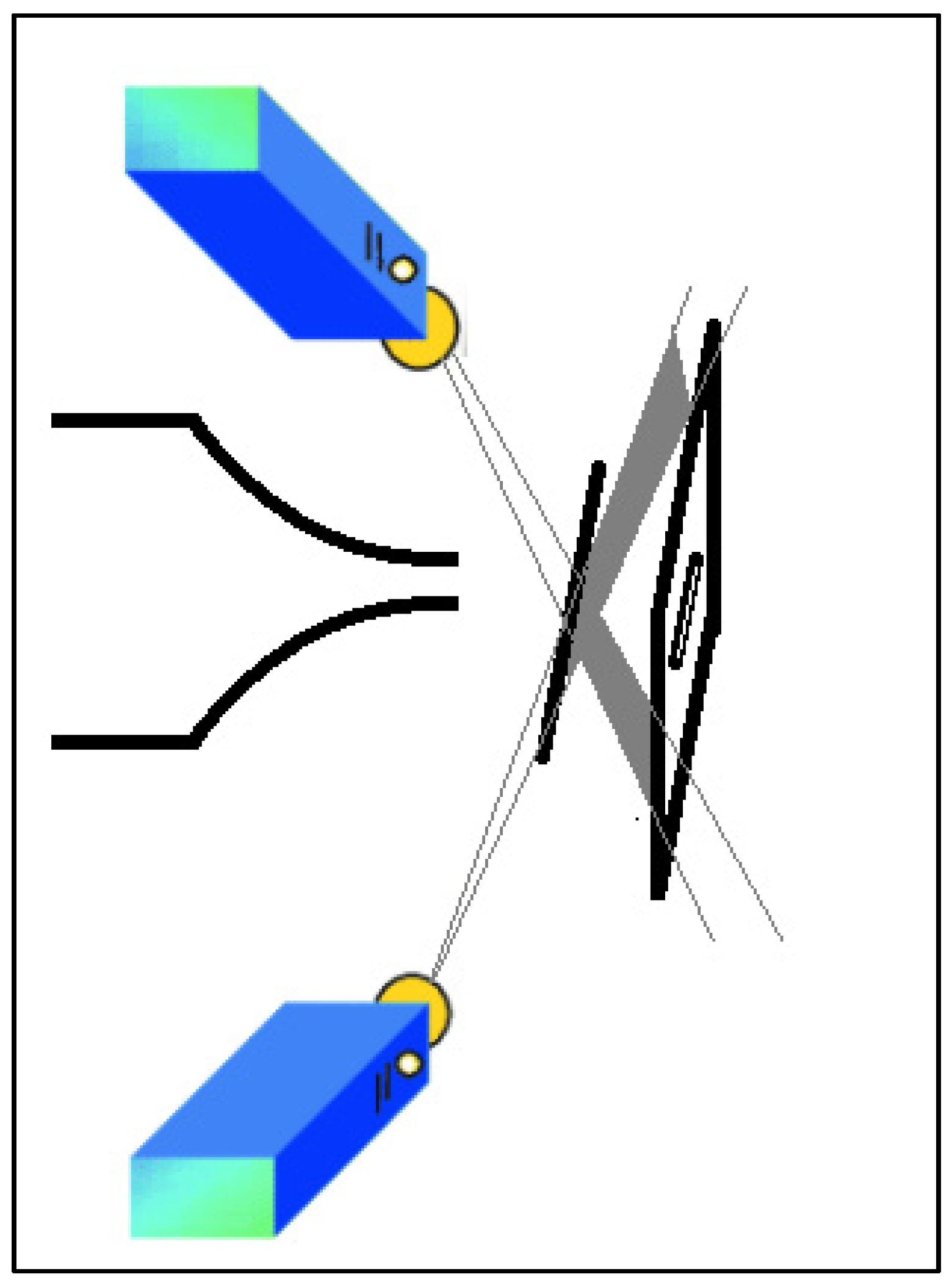
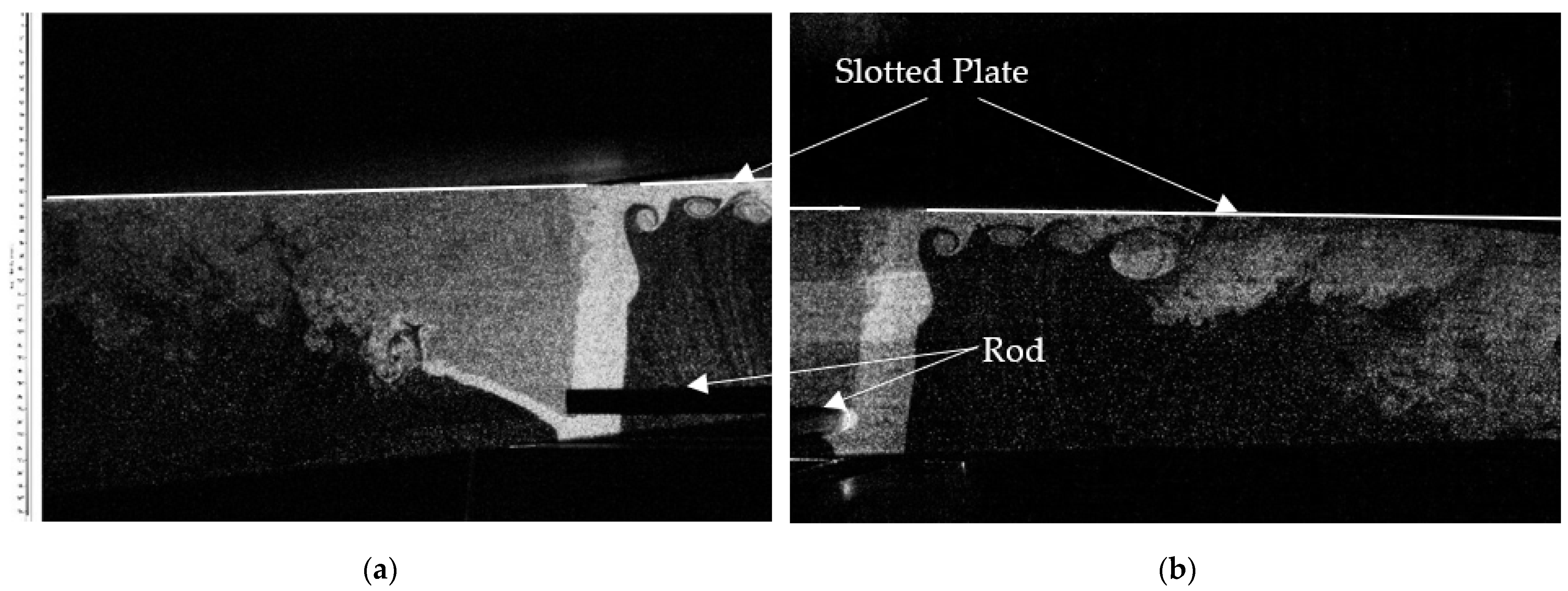


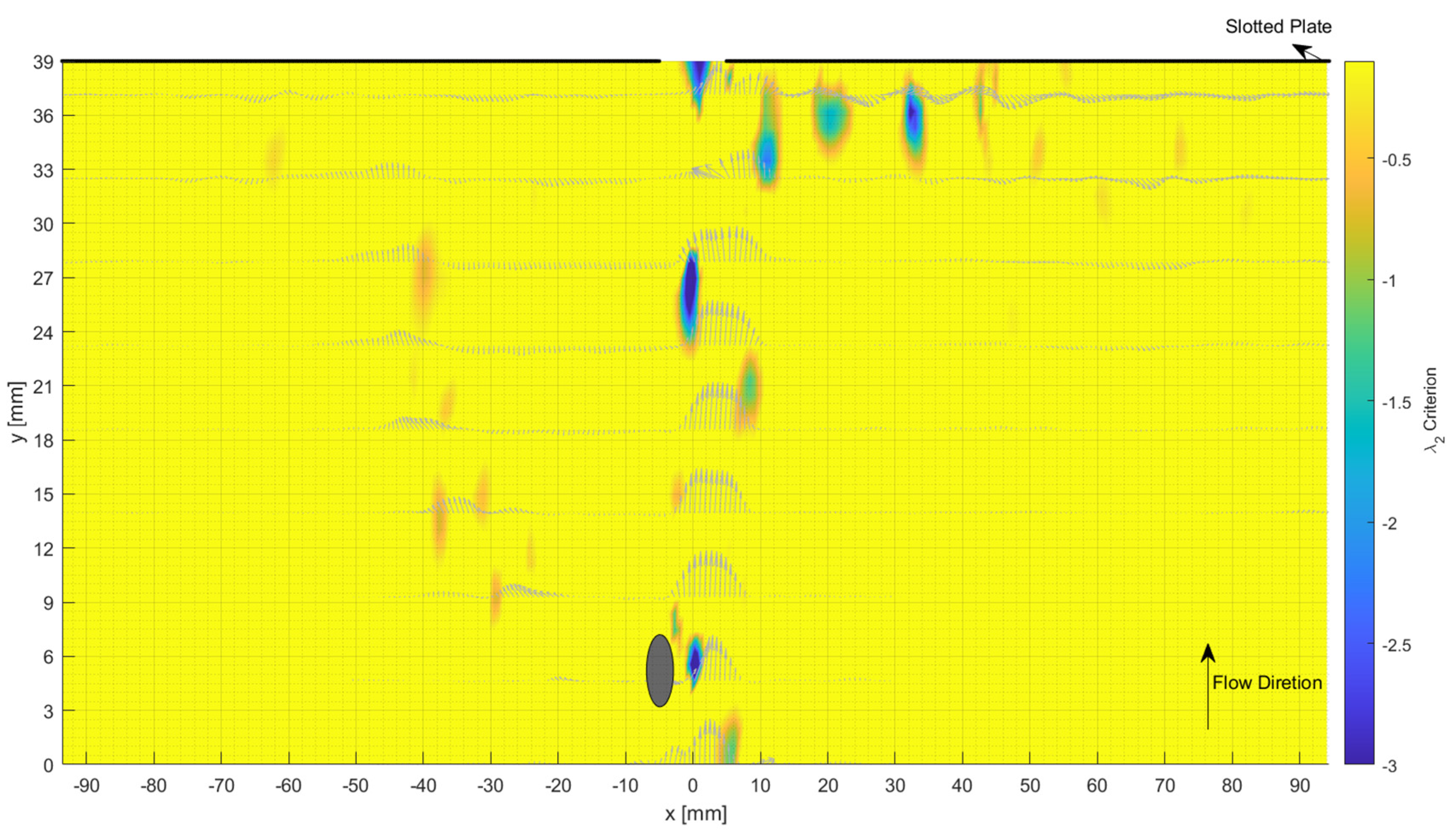
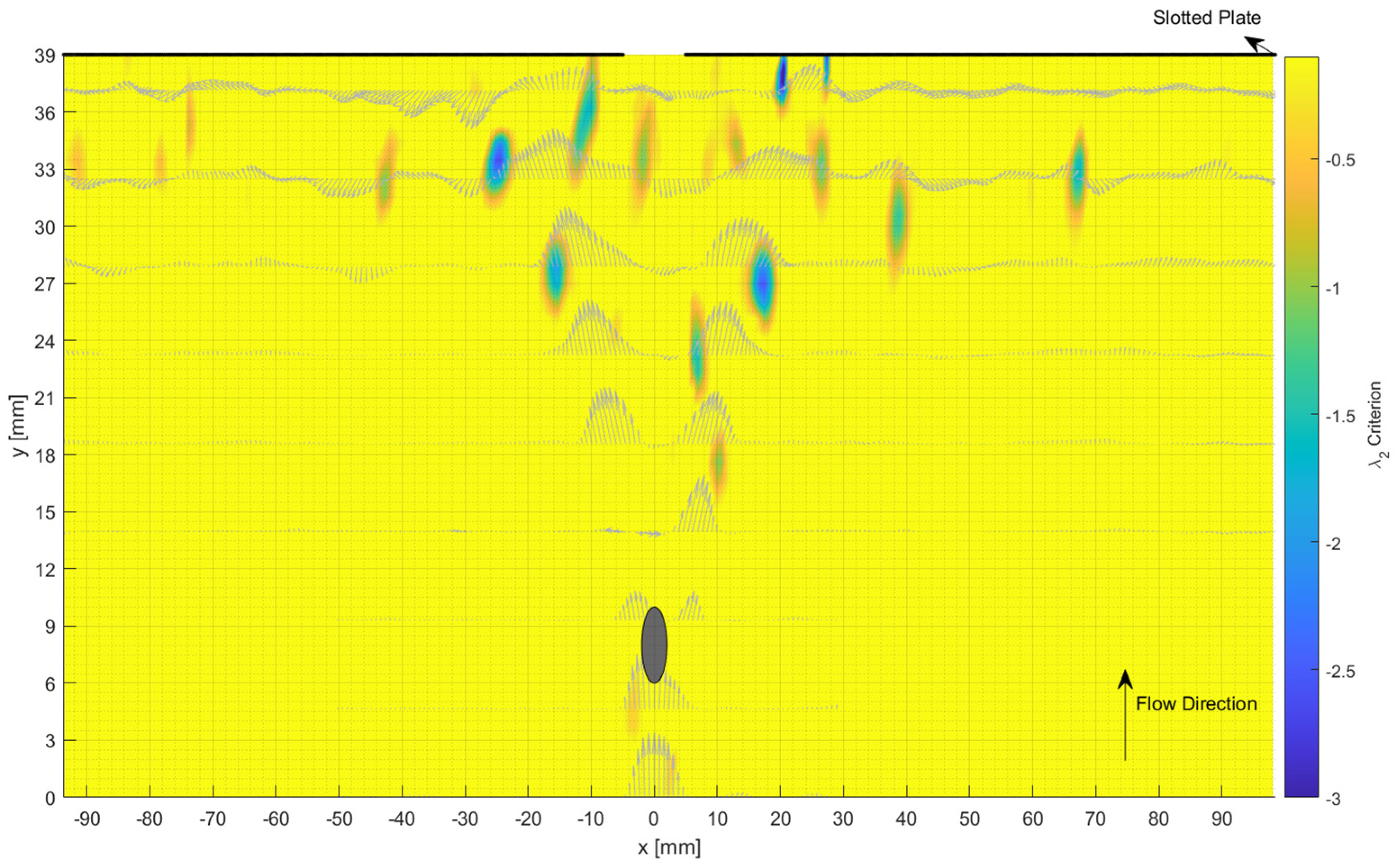
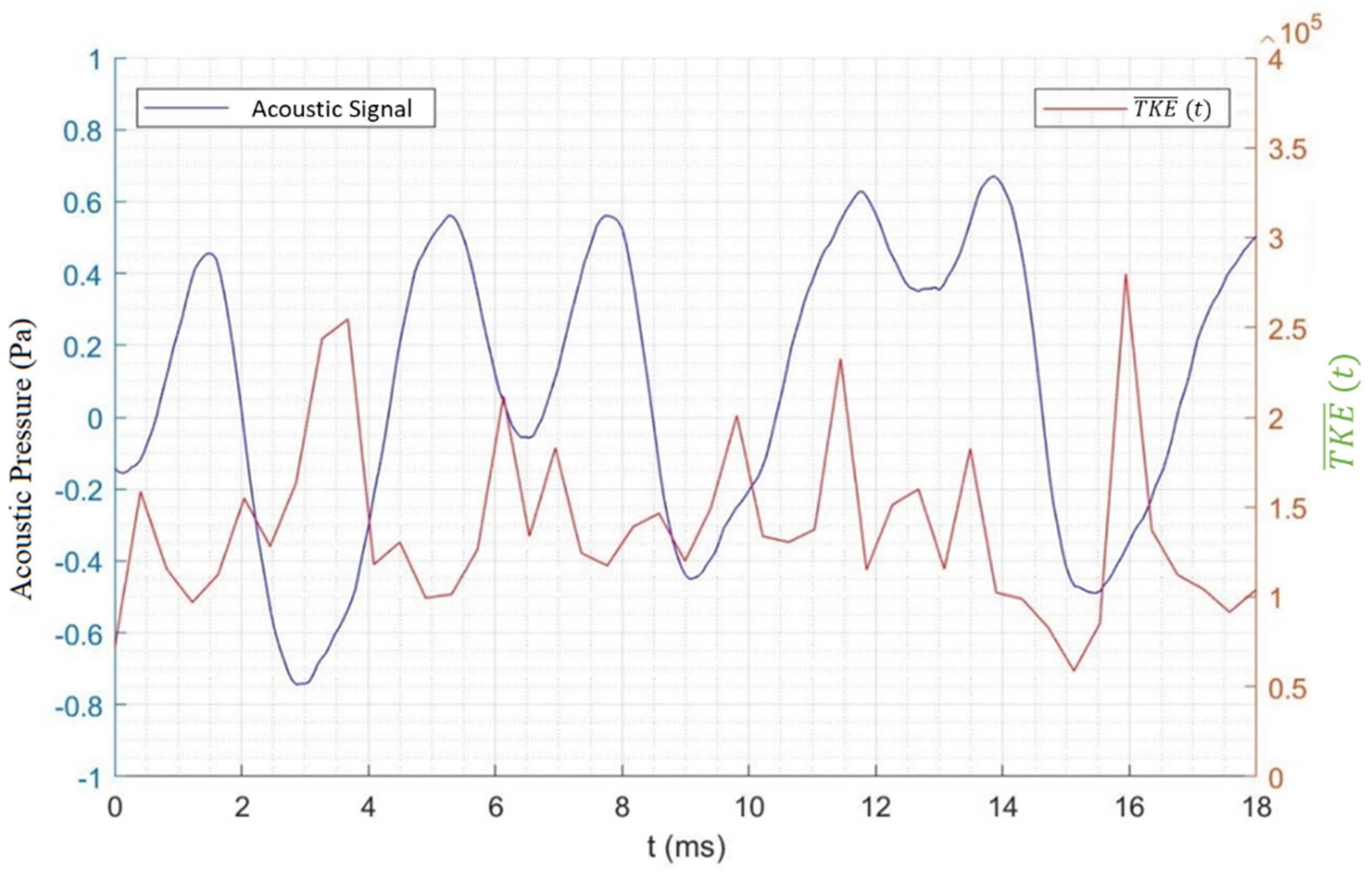
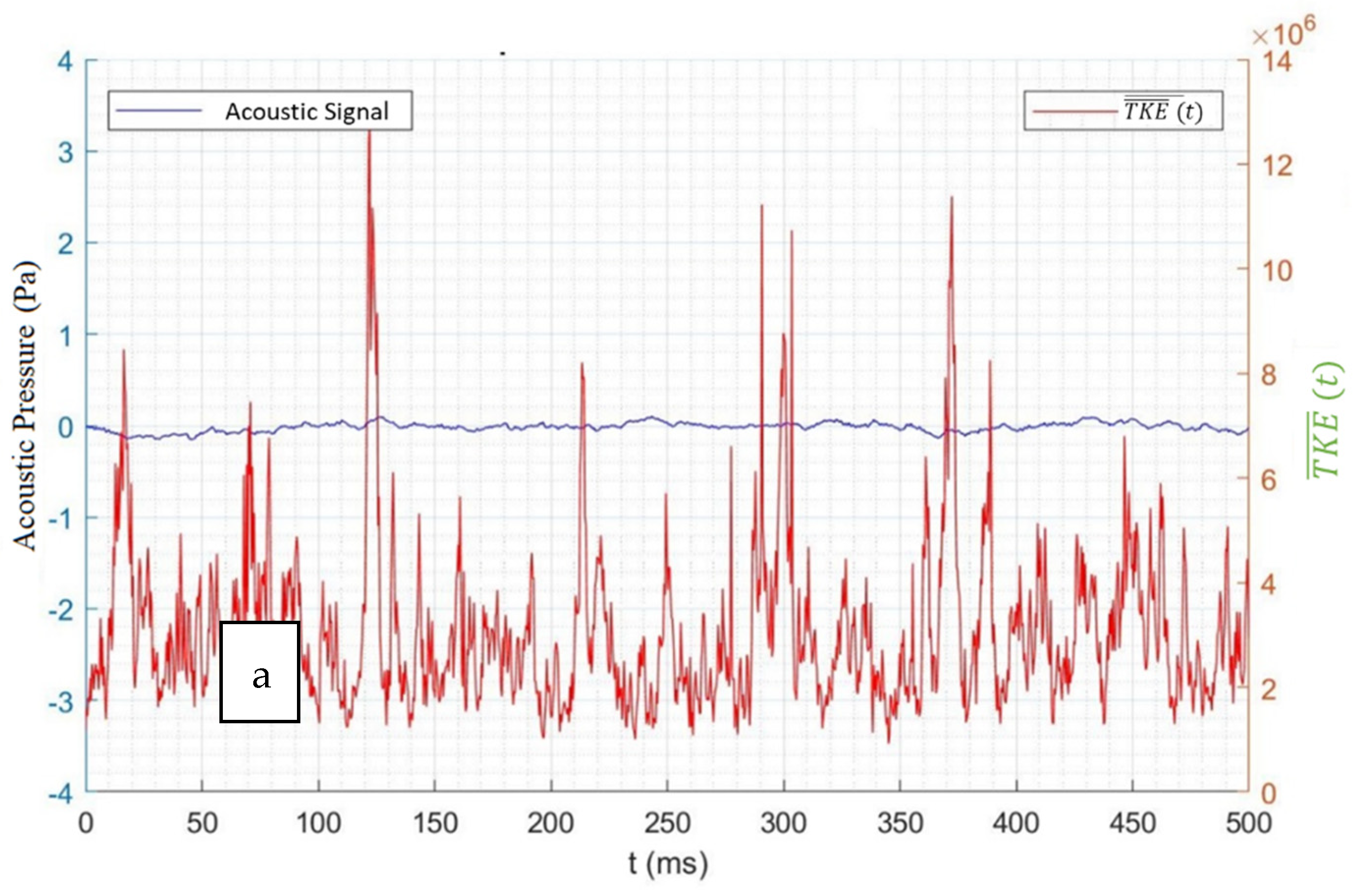
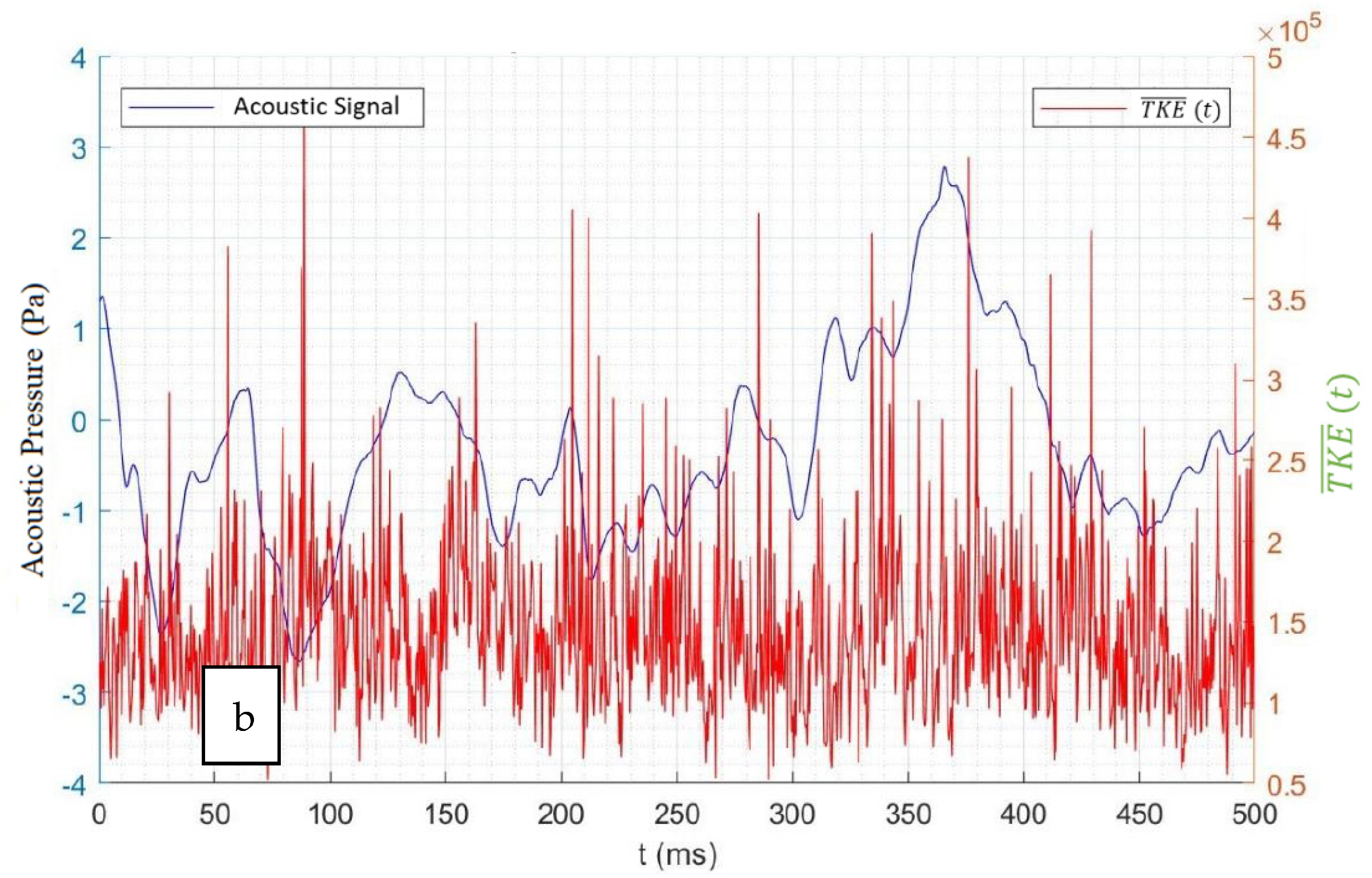
Publisher’s Note: MDPI stays neutral with regard to jurisdictional claims in published maps and institutional affiliations. |
© 2021 by the authors. Licensee MDPI, Basel, Switzerland. This article is an open access article distributed under the terms and conditions of the Creative Commons Attribution (CC BY) license (https://creativecommons.org/licenses/by/4.0/).
Share and Cite
Alkheir, M.; Assoum, H.H.; Afyouni, N.E.; Abed Meraim, K.; Sakout, A.; El Hassan, M. Combined Stereoscopic Particle Image Velocimetry Measurements in a Single Plane for an Impinging Jet around a Thin Control Rod. Fluids 2021, 6, 430. https://doi.org/10.3390/fluids6120430
Alkheir M, Assoum HH, Afyouni NE, Abed Meraim K, Sakout A, El Hassan M. Combined Stereoscopic Particle Image Velocimetry Measurements in a Single Plane for an Impinging Jet around a Thin Control Rod. Fluids. 2021; 6(12):430. https://doi.org/10.3390/fluids6120430
Chicago/Turabian StyleAlkheir, Marwan, Hassan H. Assoum, Nour Eldin Afyouni, Kamel Abed Meraim, Anas Sakout, and Mouhammad El Hassan. 2021. "Combined Stereoscopic Particle Image Velocimetry Measurements in a Single Plane for an Impinging Jet around a Thin Control Rod" Fluids 6, no. 12: 430. https://doi.org/10.3390/fluids6120430
APA StyleAlkheir, M., Assoum, H. H., Afyouni, N. E., Abed Meraim, K., Sakout, A., & El Hassan, M. (2021). Combined Stereoscopic Particle Image Velocimetry Measurements in a Single Plane for an Impinging Jet around a Thin Control Rod. Fluids, 6(12), 430. https://doi.org/10.3390/fluids6120430





